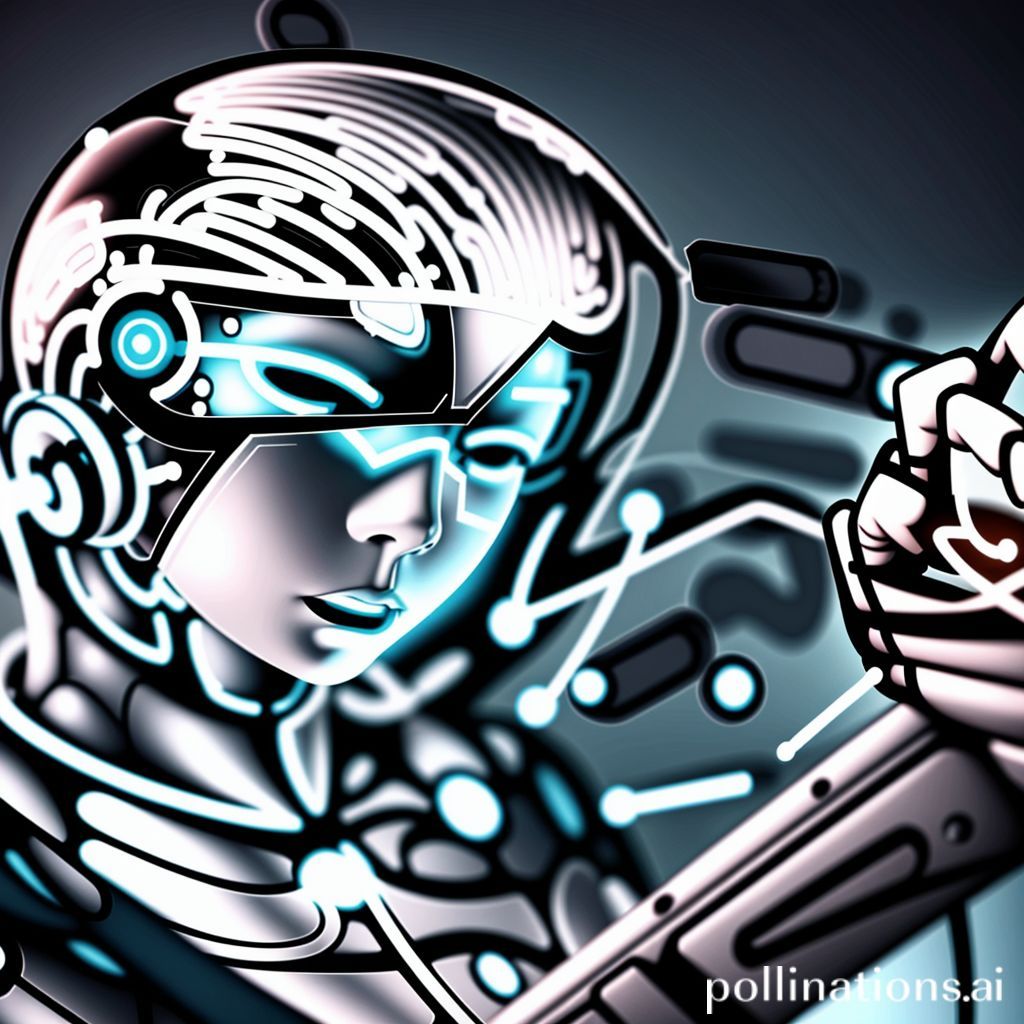Table of Contents
- Introduction
- Understanding the Capabilities: What Turnitin Actually Does
- AI Content Generators: Friends or Foes to Plagiarism Detection?
- The Rise of AI-powered Plugins and Tools in Content Creation
- How Automated Workflows Utilize AI Writing Tools
- Turnitin’s Challenges with Detecting AI-generated Content
- Exploring GPT-based AI Writers: Can Turnitin Keep Up?
- AI Writing Generators and Content Automation: A New Frontier
- Strategies for Optimizing Content in the Age of AI Writing
- Conclusion
- Frequently Asked Questions
Introduction
In the rapidly evolving landscape of artificial intelligence, the conversation around plagiarism detection has taken a fascinating turn. As AI-generated content becomes increasingly sophisticated, educators and institutions are questioning the effectiveness of traditional plagiarism detection tools like Turnitin. Can the algorithms designed to catch human offenders also recognize the nuanced language patterns of AI?
This pressing question has ignited discussions about the future of academic integrity and the responsibilities of both software developers and educational institutions. As we delve into this topic, we explore the capabilities and limitations of Turnitin in detecting AI-generated writing, and what this means for the future of plagiarism detection.

Join us as we unravel the complex relationship between technology, education, and ethics, which not only challenges the status quo but also sets the stage for a new era of innovation in plagiarism detection technologies. This captivating journey will leave you questioning the very nature of authorship and originality in our digital age.
Understanding the Capabilities: What Turnitin Actually Does
Oh, Turnitin, the digital detective in the realm of academia. It’s like that all-seeing eye, always on the lookout for little snippets of similarity. When we talk about Turnitin, it’s all about catching those cheeky copycats. The software scans the web wide and far, comparing student papers with a massive library of written work, trying to spot any twin-like tendencies.
It’s like having a nosy neighbor who knows everything about everybody. Turnitin can’t exactly tell you, “Hey, this one’s written by a robot!” But it can certainly flag what’s borrowed, begging the question: Is it human, or just our clever mechanical mate? Turns out, while it’s fantastic at fishing out the familiar, detecting AI’s polished prose might just be a whole different ball game.
To illustrate, imagine submitting a paper, confident in its originality, only for it to screech like a startled cat when it hits Turnitin. The software whispers tales of text déjà vu to the educators, prompting them to dig deeper. But AI detection? That’s still a bit… murky. You’d need something beyond the textual detective work, a new breed of gizmo, perhaps. Now, that’s a thought for tomorrow’s world!
AI Content Generators: Friends or Foes to Plagiarism Detection?
Once upon a time, in the realm of academia, there was a knight in shining armor named Turnitin. It was the go-to tool for professors, battling the dragons of plagiarism with its mighty algorithms. As reliable as a loyal steed, Turnitin had been keeping essays honest and students on their toes. Enter AI content generators, those magical machines that, with a flicker of code, could churn out essays faster than you can say ‘artificial intelligence’. Now, the question lingering in the halls of academia is, are these AI tools friend or foe to our stalwart defender?
Let’s face it, AI has a way of making everything easier—sometimes too easy. Imagine, if you will, a student burning the midnight oil, crafting a masterpiece, only to find that a machine can do it quicker. It’s like bringing a water gun to a sword fight. But here’s the twist: Turnitin’s not resting on its laurels. As AI evolves, so too does the armor of plagiarism detection, adapting and learning, just like the robots do.
The irony here? AI, with its binary vision, is teaching us a thing or two about originality. So, while the machines whirr and click, the age-old battle of integrity rages on, with Turnitin right in the thick of it.
The Rise of AI-powered Plugins and Tools in Content Creation
In the ever-evolving world of content creation, AI-powered plugins and tools are like the new kids on the block, shaking things up and making waves. Just imagine, a few years back, who would have thought that software could whip up articles quicker than a cat on a hot tin roof? But here we are! With AI tools, crafting content isn’t just about stringing words together—it’s about weaving a tapestry of thoughts with a mere click. Take a minute, picture the irony: machines, once mere numbers crunchers, now bless us with creativity’s kiss. Talk about turning the tables! As innovators explore the digital frontier, new tools pop up like daisies in spring, ready to lend a hand or maybe a microchip. But wait, there’s a twist in the tale. While these plugins and tools sing sweet symphonies of efficiency, lurking in the background is the ever-present question of authenticity. Writers all over the globe are left wondering, “Are we sailing into a brave new world, or are we building castles in the air?” Only time will tell if the pen is mightier when paired with the processor. Ah, the plot thickens!
How Automated Workflows Utilize AI Writing Tools
Ah, the wonders of technology! In today’s fast-paced world, automated workflows are becoming as common as coffee in the office. By embracing AI writing tools, businesses are finding new ways to streamline their operations. But how exactly does this magic happen? Well, imagine a busy bee, flitting from task to task without a buzz of hesitation—AI works pretty much the same way. It takes on mundane tasks, allowing humans to focus on creativity and strategy.
Picture a publishing house: deadlines are looming, and the pressure’s mounting. Here enters AI, the unseen assistant. It crafts drafts, checks for grammar goofs, and can even suggest style improvements faster than you can say ‘pen and paper’. No more hair-pulling over typos or awkward sentences! It’s like having a virtual editor that never sleeps.
These tools aren’t just limited to words on a page—they can learn from ongoing projects, picking up patterns, and optimizing processes. Like a detective piecing together clues, AI deciphers users’ preferences and habits, paving pathways for more efficient workflows. Isn’t it ironic, though? We create machines that think like us to give us more time to think.
Turnitin’s Challenges with Detecting AI-generated Content
Ah, the age-old battle of man versus machine, now taking center stage in classrooms and virtual halls. Turnitin, the stalwart guardian against the tide of plagiarism, finds itself in choppy waters trying to fish out AI-generated content. You know, it’s like trying to catch a slippery fish barehanded! While Turnitin is well-equipped to spot text recycling or student copycats, identifying content crafted by artificial intelligence is a whole different ballgame. For one, AI-generated prose often flows as smoothly as if it’s been finely brewed, sometimes even more so than human attempts. Irony, ain’t it?
However, it’s not all doom and gloom. Turnitin’s developers are burning the midnight oil, exploring ways to teach the old dog new tricks. Algorithms are being trained to identify subtle patterns only machines might use, but let’s face it, they’re still in the early days. Like a seasoned detective, Turnitin may need to up its game, sift through the smoke and mirrors, and use some figurative magnifying glasses. With technology advancing at lightning speed, it’s a race against time to ensure academic integrity stays strong.
Exploring GPT-based AI Writers: Can Turnitin Keep Up?
These days, AI writing tools, like the mysterious GPT-based scribes, are giving even the most seasoned quill-dippers a run for their money. Pretty wild, right? But here’s where things get interesting: Turnitin, a seasoned sentinel in the world of academic integrity, stands watch, ready to catch the faintest whiff of deceit. The question is—can it detect AI’s invisible ink? Once upon a time, a student’s paper was a symphony of their own making, penned in the quiet of night while the world dreamt. But now, with AI crafting paragraphs quicker than you can say ‘procrastination,’ it’s like watching a plot twist unfold in broad daylight. Imagine Turnitin, a digital watchdog, sniffing the air, trying to distinguish between humanly-crafted prose and the algorithmic whispers of an AI. Like a seasoned detective scanning a crime scene, Turnitin sifts through the words, searching for something amiss. Yet, there’s a twist—these AI writers are getting clever, weaving words with a touch of human flair. It’s like trying to spot a needle in a haystack or finding Waldo in a sea of stripes. So, while Turnitin’s eyes are sharp, the game is afoot, evolving, changing with every tick of the clock.
AI Writing Generators and Content Automation: A New Frontier
AI writing generators and content automation have burst onto the scene like a digital Picasso, painting words across the blank canvas of the internet. Imagine: a world where writing happens at the speed of light, with machines spinning tales and composing emails faster than you can say, "What a time to be alive!" Oh, it sounds like something out of a sci-fi novel, doesn't it? But here we are, standing at this new frontier.
In the nooks and crannies of the digital landscape, AI is hard at work, cranking out content with the precision of a Swiss watchmaker. It’s as if these writing generators have a Midas touch, turning ideas into golden prose. Yet, amidst this whirlwind, there's a whisper of irony, a hint of human concern: can the soul of storytelling really be coded into algorithms? Or is it all just smoke and mirrors?
As AI continues to evolve, it's becoming a tool as indispensable as your morning coffee. For businesses yearning to keep pace in today's fast lane, content automation can be the secret sauce. However, amidst the fireworks, let's not forget the power of the human touch, because sometimes, a machine-made symphony can't quite hit that lingering, heart-tugging note. So, in this brave new world, we find ourselves asking: what's next?
Strategies for Optimizing Content in the Age of AI Writing
In this digital age where cats just might rule the internet and AI’s pen dances across virtual paper, writers are finding new ways to stand out in the crowd. It’s like navigating a maze where every twist seems to lead to more and more AI-generated content. So, what’s a writer to do? For starters, embracing creativity is the golden key. Get descriptive; paint pictures with words! Instead of saying someone ‘walked slowly,’ sprinkle some life by saying they ‘ambled like a leaf on a lazy river.’ Feel that breeze?
Next up is authenticity. Readers can smell a fake from a mile away, and AI, try as it might, struggles to whisper secrets of the human soul. Include anecdotes, those little snippets of real life. Maybe the time you spilled coffee on your laptop, and suddenly, everything was upside down. Good times, right?
When it comes to structure, mix it up. A short sentence here. A question there. A paradox in the middle. Keeps folks on their toes, doesn’t it? Ah, and let’s not forget the power of voice; it’s the writer’s fingerprint, a melody AI often misses. So, sing your own song, and who knows? Maybe your words will be the ones that echo the loudest.
Conclusion
As we tread into an era where AI-generated content and automated workflows rapidly redefine the landscape, staying ahead requires embracing advanced tools. The capabilities of AI writing generators are evolving at breakneck speed, often leaving traditional methods in their wake. WPHorde emerges as a powerful ally in navigating this new digital frontier. Its dynamic features equip users to harness the full potential of automated content creation while ensuring authenticity and originality. Those who do not utilize innovative tools like WPHorde risk being left behind in this fast-paced world. Now is the time to act—embrace WPHorde and ensure you remain at the cutting edge of content creation.
